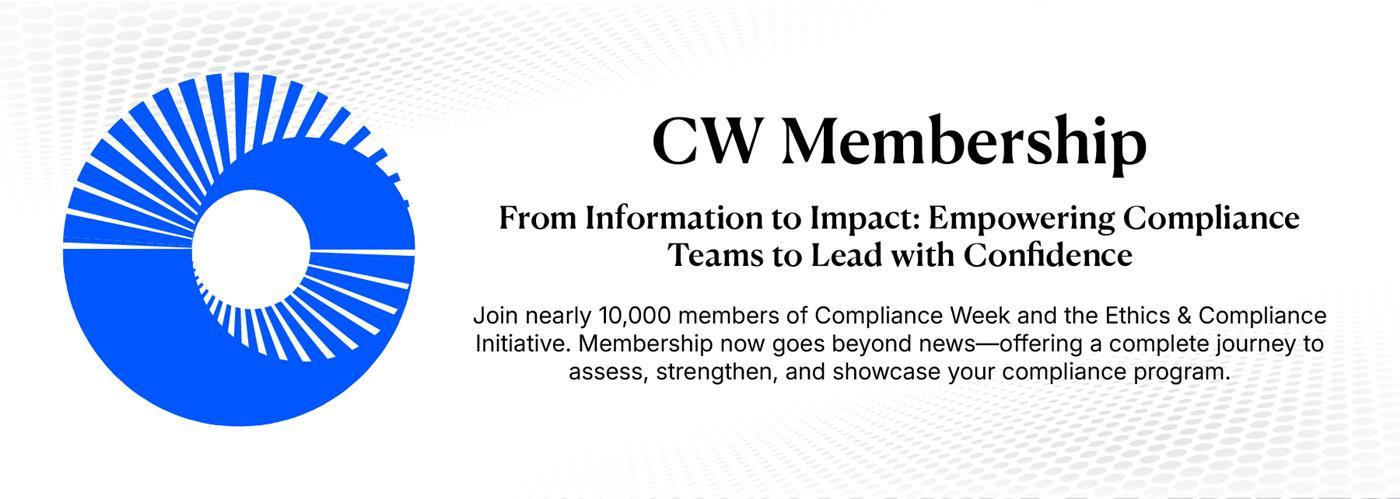- Home
-
News
- Back to parent navigation item
- News
- National Compliance Officer Day 2025
- Accounting & Auditing
- AI
- AML
- Anti-Bribery
- Best Practices
- Boards & Shareholders
- Cryptocurrency and Digital Assets
- Culture
- ESG/Social Responsibility
- Ethics & Culture
- Europe
- Financial Services
- Internal Controls
- Regulatory Enforcement
- Regulatory Policy
- Risk Management
- Sanctions
- Surveys & Benchmarking
- Supply Chain
- Third Party Risk
- Whistleblowers
- Opinion
- Benchmarking
- Certification
- Events
- Research
- Awards
-
CW Connect
- Back to parent navigation item
- CW Connect
- Sign In
- Apply
- Membership
Best practices for navigating changing U.S. data privacy landscape
By  Adrianne Appel2023-02-27T14:00:00
Adrianne Appel2023-02-27T14:00:00

Businesses are watching five U.S. states where consumer privacy laws are set to take effect this year.
The passage of legislation in Colorado, Connecticut, Utah, and Virginia, plus a major amendment to the California Consumer Privacy Act that took effect in 2020, was driven by consumer demand for more control over the personal data companies collect, trade, and sell following decades of data breaches and high-profile information sharing.
“Privacy is a hot-button issue and one consumers are really in tune with,” said Jenny Holmes, deputy leader of the cybersecurity and privacy team at law firm Nixon Peabody. “It’s new and under the spotlight, so it adds pressure on companies.”
And yet, some companies see data privacy compliance as an opportunity.
THIS IS MEMBERS-ONLY CONTENT
You are not logged in and do not have access to members-only content.
If you are already a registered user or a member, SIGN IN now.
Related articles
-
 Premium
PremiumFrom 5 to 11: Keeping up with new state data privacy laws
2023-09-06T15:00:00Z By Adrianne Appel
If multi-state businesses thought at the start of 2023 complying with a patchwork of U.S. state privacy laws was going to be a lot of work, now they must be overwhelmed. Experts assess the fast-evolving U.S. privacy landscape.
-
 News Brief
News BriefIndiana privacy bill signed into law; effective 2026
2023-05-03T19:52:00Z By Adrianne Appel
Indiana became the latest in a growing number of U.S. states with a comprehensive consumer data privacy law on the books.
-
 News Brief
News BriefIowa privacy bill signed into law; effective 2025
2023-03-29T13:55:00Z By Kyle Brasseur
Iowa became the sixth U.S. state to pass comprehensive data protection legislation allowing residents control over how their personal information is accessed and shared.
More from Regulatory Policy
-
 Article
ArticleEU loosens AI and data rules
2025-12-24T18:45:00Z By Neil Hodge
Europe has been at the forefront of designing strong—but flexible—rules around data use and the safe development of AI, but the EU recently announced plans to simplify some key measures around data privacy and AI governance, which have met with mixed responses.
-
 Premium
PremiumQ&A with FINRA’s Greg Ruppert on the organization’s use of Artificial Intelligence
2025-12-19T20:33:00Z By Aaron Nicodemus
Greg Ruppert, Chief Regulatory Operations Officer at the Financial Industry Regulatory Authority (FINRA), recently shared insights with Compliance Week regarding the self-regulatory organization’s use of Artificial Intelligence in monitoring trends in the market, spotting threats, and keeping its members informed.
-
 Premium
PremiumEU financial firms must prepare now for new rules on critical third-party arrangements
2025-12-15T18:04:00Z By Ruth Prickett
European banks and financial institutions must prepare now for stringent new rules on third-party suppliers.
- Terms and Conditions
- Privacy Policy
- Do Not Sell My Info
- © 2025 Compliance Week
Site powered by Webvision Cloud






